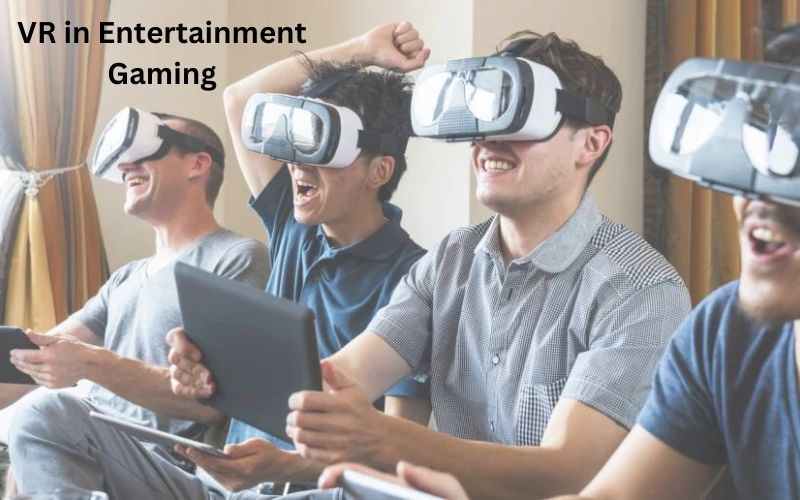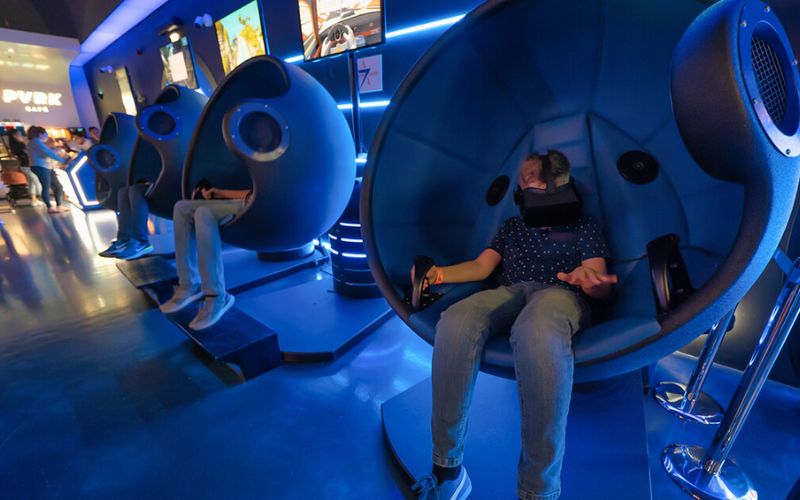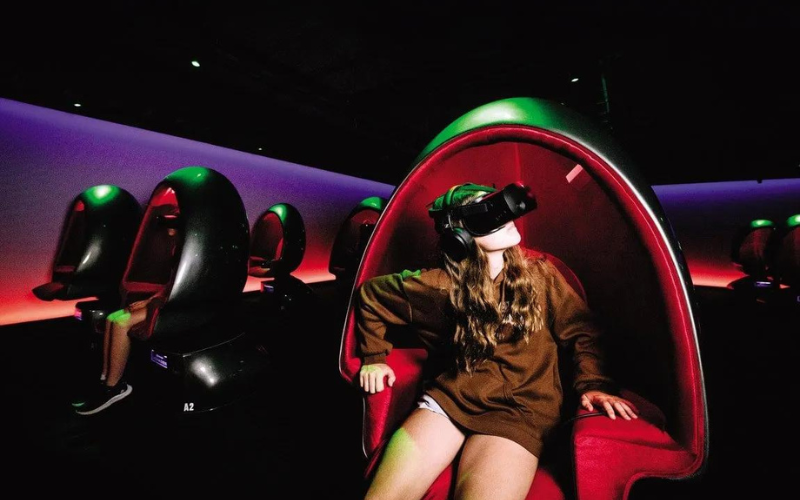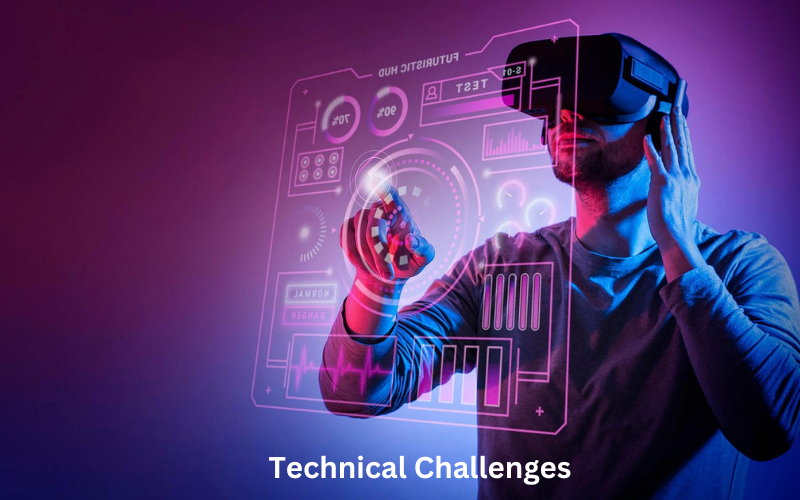Virtual Reality (VR) has transitioned from a futuristic concept to a tangible technology that is reshaping the landscape of entertainment. Over the past decade, VR has evolved significantly, moving beyond niche applications to mainstream adoption. The immersive nature of VR offers a unique experience, allowing users to interact with digital environments in ways that were previously unimaginable. This article delves into the latest advancements in VR technology and examines its profound impact on the entertainment industry.
The Evolution of VR Technology

Early Beginnings
The concept of VR dates back to the mid-20th century with early inventions like the Sensorama and the Telesphere Mask. However, it wasn’t until the late 20th and early 21st centuries that VR began to take shape in the form we recognize today. The development of head-mounted displays (HMDs) and motion tracking systems laid the groundwork for modern VR experiences.
Technological Milestones
The release of the Oculus Rift in 2012 marked a significant milestone in VR technology. This device, developed by Oculus VR, a subsidiary of Meta Platforms (formerly Facebook), set new standards for VR headsets. It featured improved tracking, higher resolution displays, and a more comfortable user experience. Following the Oculus Rift, other major players like HTC Vive, Sony PlayStation VR, and Valve Index entered the market, each bringing their own innovations.
Recent Advancements
Recent years have seen remarkable advancements in VR technology. Standalone VR headsets, such as the Oculus Quest and Quest 2, have gained popularity due to their wireless capabilities and ease of use. These devices offer high-quality VR experiences without the need for a powerful gaming PC or external sensors. Additionally, advancements in haptic feedback, eye-tracking, and spatial audio have further enhanced the level of immersion, making VR experiences more realistic than ever.
VR in Entertainment

Gaming
Gaming has been at the forefront of VR adoption. The immersive nature of VR allows gamers to step into virtual worlds and interact with them in unprecedented ways. Popular VR games like “Beat Saber,” “Half-Life: Alyx,” and “The Walking Dead: Saints & Sinners” have garnered critical acclaim for their innovative use of VR technology. These games leverage VR’s ability to provide a 360-degree field of view, natural motion tracking, and tactile feedback to create deeply engaging experiences.
Cinema and Storytelling
VR is also revolutionizing the way stories are told in cinema. Traditional filmmaking techniques are being adapted to create immersive VR narratives. Directors and storytellers are experimenting with VR to place viewers at the center of the story, allowing them to experience events from a first-person perspective. This form of storytelling has the potential to evoke stronger emotional responses and a deeper sense of presence. VR films like “The Great C” and “Wolves in the Walls” showcase the unique storytelling possibilities of this medium.

Virtual Concerts and Events
The COVID-19 pandemic accelerated the adoption of VR for live events. With physical gatherings limited, artists and event organizers turned to VR to create virtual concerts and events. Platforms like Wave, VRChat, and Sansar have hosted virtual performances by major artists, offering fans an immersive and interactive concert experience. These virtual events allow attendees to explore digital venues, interact with other fans, and enjoy performances as if they were there in person.
Theme Parks and Location-Based Entertainment
Theme parks and location-based entertainment centers are incorporating VR to enhance attractions and create new experiences. VR roller coasters, such as those found at Universal Studios and Six Flags, combine physical thrills with immersive virtual environments. Additionally, VR escape rooms and interactive exhibits are gaining popularity, providing visitors with unique and engaging experiences that blend the physical and digital worlds.
The Impact of VR on Entertainment

Enhanced Immersion and Interactivity
One of the most significant impacts of VR on entertainment is the heightened level of immersion and interactivity it offers. Unlike traditional media, VR places users inside the experience, allowing them to interact with the environment and characters in meaningful ways. This level of immersion creates a sense of presence, making users feel as though they are truly part of the virtual world.
New Forms of Creative Expression
VR opens up new avenues for creative expression. Artists, filmmakers, and game developers can experiment with storytelling techniques that were previously impossible. The ability to create fully immersive environments allows for innovative narrative structures and interactive experiences. For example, VR can be used to create non-linear stories where users can explore different paths and outcomes based on their choices.
Expanding Audiences

VR has the potential to reach new audiences who may not be interested in traditional forms of entertainment. The interactive and immersive nature of VR can appeal to individuals who prefer more active and engaging experiences. Additionally, VR can make entertainment more accessible to people with disabilities by providing alternative ways to experience content.
Economic Opportunities
The growing popularity of VR in entertainment has created new economic opportunities. VR game development, VR filmmaking, and VR event production are emerging industries with significant growth potential. Furthermore, VR experiences can generate additional revenue streams for traditional entertainment companies. For example, theme parks can offer premium VR attractions, and film studios can produce VR companion experiences for their movies.
Challenges and Future Directions
Technical Challenges
Despite its advancements, VR technology still faces several technical challenges. Motion sickness, caused by discrepancies between visual and physical movement, remains a common issue. Improving display resolution, reducing latency, and enhancing motion tracking are ongoing areas of research and development. Additionally, the cost of high-quality VR equipment can be a barrier to widespread adoption.

Content Creation
Creating high-quality VR content is a complex and resource-intensive process. VR experiences require specialized skills in 3D modeling, animation, and interactive design. As the demand for VR content grows, there is a need for more accessible tools and platforms that allow creators to produce immersive experiences more easily.
Social and Ethical Considerations
The immersive nature of VR raises important social and ethical considerations. The potential for VR to create highly realistic simulations raises questions about its impact on mental health, privacy, and user behavior. Additionally, the development of VR content must consider issues of inclusivity and representation to ensure that VR experiences are accessible and relevant to diverse audiences.
Future Directions
The future of VR in entertainment is promising, with several exciting developments on the horizon. Advances in artificial intelligence (AI) and machine learning (ML) are expected to enhance the realism and interactivity of VR experiences. AI-driven characters and environments can respond dynamically to user actions, creating more immersive and personalized experiences. Additionally, the integration of VR with other emerging technologies, such as augmented reality (AR) and mixed reality (MR), has the potential to create even more compelling and versatile entertainment experiences.
Conclusion

Virtual reality has come a long way from its early beginnings, evolving into a powerful technology that is transforming the entertainment industry. The latest advancements in VR are pushing the boundaries of what is possible, offering unprecedented levels of immersion and interactivity. From gaming and cinema to virtual concerts and theme park attractions, VR is creating new ways for people to experience and engage with entertainment. While challenges remain, the future of VR in entertainment is bright, with endless possibilities for creative expression and audience engagement. As technology continues to advance, VR is poised to become an integral part of the entertainment landscape, shaping the way we experience and interact with digital content.

